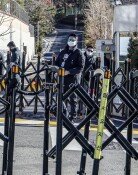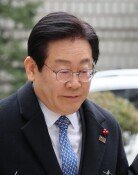Half of Them Wept and Left
Why? Because its been learned that the underprivileged face severe difficulties in moving up the social ladder according to the Dong-A Ilbos review of the Labor Panel of the Korea Labor Institutes six-year investigation (from 1998 to 2003). It was also found out that even white collar people faced very unstable employment situations.
Since 1998, the Labor Panel has conducted annual analysis every year on the same 5,000 households throughout metropolitan areas nationwide, or around 13,000 people (aged 15 and older), on their identity, financial source, changes in occupation, consumption, expenditure, and other changes in their economic activities.
According to the analysis, during the 1997 to 1998 financial crisis, more than half of the workers with jobs in production are involved in the same line of work even after five years.
In addition, only 19.7 percent of the then unemployed in 1998 had jobs they wanted as of 2003, and still about half of them are jobless.
This shows a large gap between the desire of the jobseeker and the demand of the labor market.
Moreover, only 52 percent maintained their previous jobs for five years after the financial crisis.
Around 70 percent of those who changed occupations either ended up in lower-paying jobs or even lost them.
As for professionals such as doctors, lawyers, and college professors, 64.4 percent of them had the same occupation even after five years, showing how easily they overcame the financial crisis and the long-term economic recession.
In contrast, as for the office workers and associate professionals, 40.7 percent and 49.5 percent changed their occupations into service workers, technicians, or simple laborers in 2003, respectively, showing that they were the hardest hit by the financial crisis.
Fewer than 50 percent, or 40.82 percent, of the office workers had the same occupation even five years after the late 1997 financial crisis, safely surviving the restructuring.







